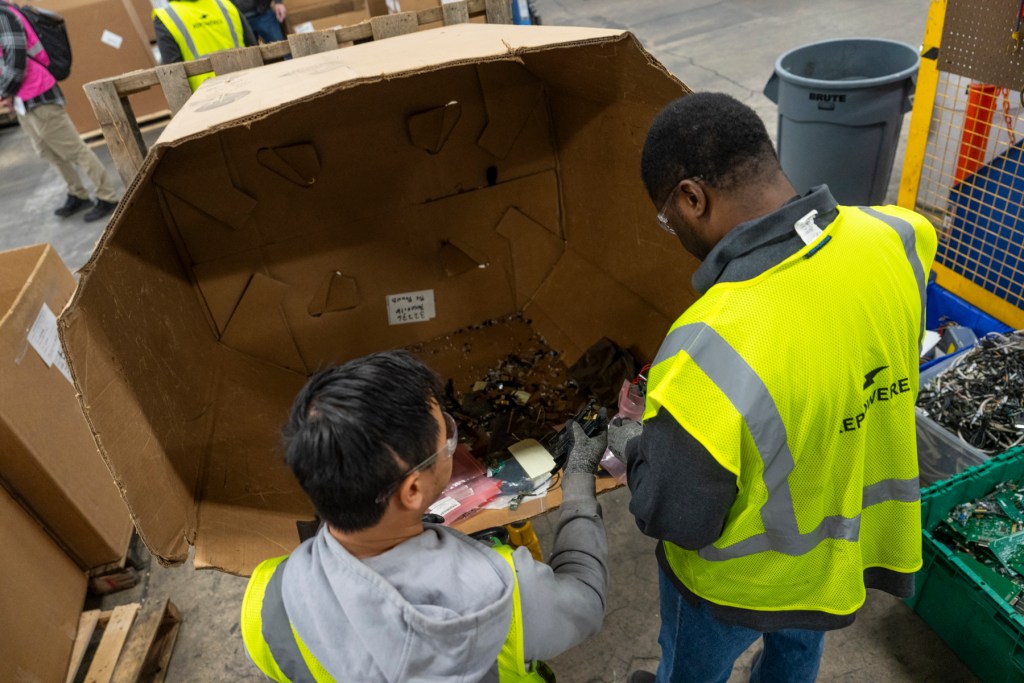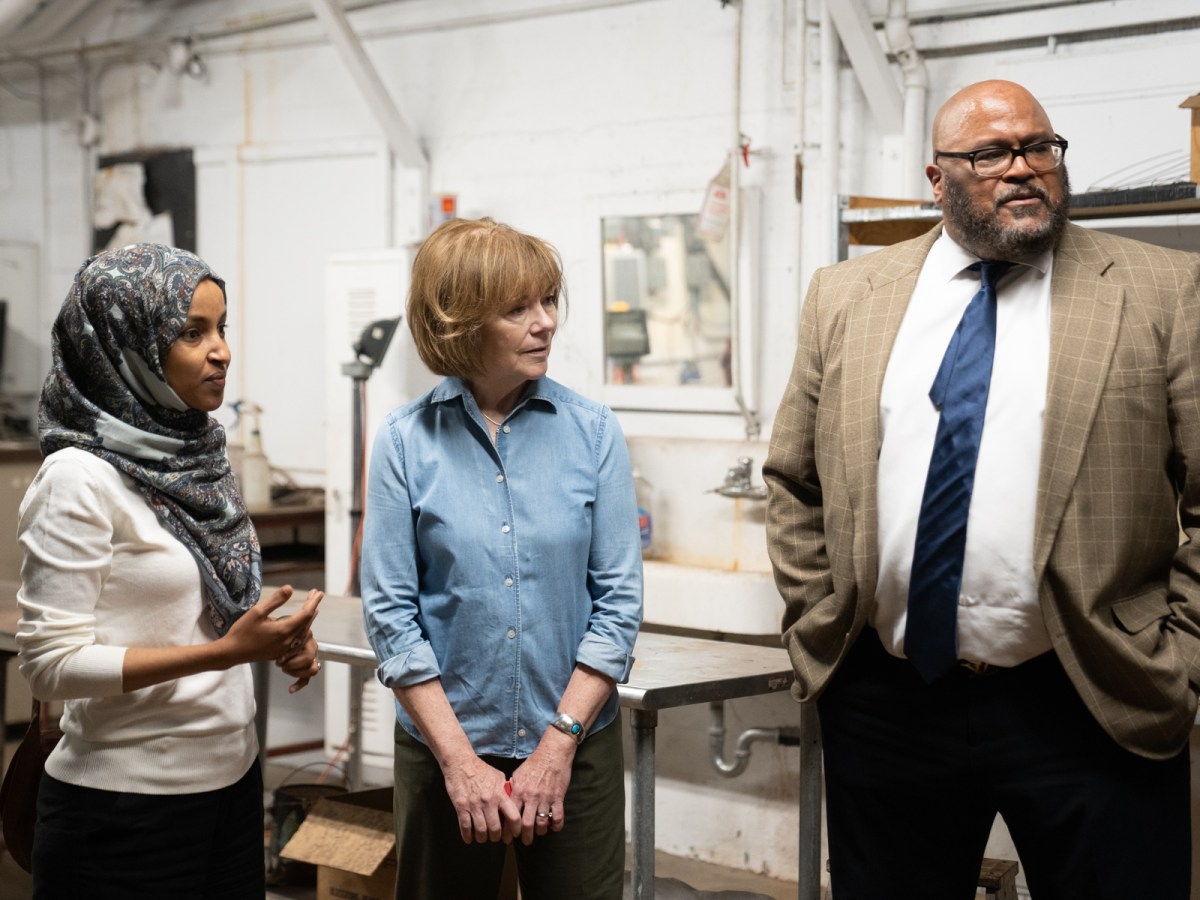A new state plan calls for reducing waste in the Twin Cities by increasing reuse and recycling, reducing food waste, and more efficiently processing items like electronics that are difficult to dispose of.
The Metro Solid Waste Plan maps out the future of waste management in the seven-county metropolitan area (Anoka, Carver, Dakota, Hennepin, Ramsey, Scott, and Washington counties), and predicts that the production of waste will grow in coming years. The plan aims to effectively maintain the current waste levels moving forward by finding ways to cut back on future trash production.
The final version of the plan, released Tuesday by the Minnesota Pollution Control Agency (MPCA), estimates that the metro area’s waste production will increase by nearly 20% by 2042, and calls for cutting 15% of that waste over the next 20 years.
That means the 3.3 million tons of waste the metro currently produces each year must hold steady as its composting and recycling rates increase. At the same time, the area must find a way to lower its consumption of material goods, a more daunting challenge.
It’s a more aggressive goal than a draft plan released in June that called for reducing future trash by 5%, state officials said, adding that it will help limit burdening landfills and trash incinerators.
“These goals are ambitious,” said Kirk Koudelka, MPCA assistant commissioner for land policy and strategic initiatives. “We’re committed to changing our systems to meet them, but we also need every resident of the Twin Cities to commit to better choices as well.”
The Twin Cities currently diverts 49% of waste via recycling and composting, according to the MPCA. Although the rate is rising, it’s nowhere near the rate set by Minnesota law that requires 75% diversion by 2030.
The plan offers 70 strategies to get there, including making it easier for residents to compost and helping grocery stores and restaurants eliminate food waste. One strategy calls for offering grants to local governments, schools, and religious institutions to increase the reuse and repair of goods.

The Metro Solid Waste Plan helps the seven counties implement their own waste plans and guides policies intended to help reach diversion goals.
“We really want to focus on waste reduction and reuse,” Koudelka said.
The plan will require the counties to implement the curbside collection of compost or organics recycling by 2030 for all cities with more than 5,000 residents. Counties will also have to establish programs to sort recyclable materials out of trash by 2030, and improve recycling at apartments and condominiums.
State officials also plan to push for new legislation that will help achieve waste reduction goals, including an extended producer responsibility law that incentivizes companies to use more sustainable packaging and funding for new recycling and waste management infrastructure.
Economic opportunity
State officials say increased recycling could create more jobs as part of what waste experts call the circular economy. Minnesota currently has 13,000 reuse businesses employing around 45,000 people, according to a report from the nonprofit, Reuse Minnesota. Those workers break down goods at the end of their current life cycle, salvage valuable materials, and resell those commodities to be reused.
That industry could add another 15,000 jobs under the state plan, Koudelka said, by processing the estimated $143 million of valuable goods that are tossed into the trash today.
It’s a cycle on full display at Repowered, an electronics recycler in St. Paul, where the MPCA announced its plan Tuesday. A 2023 report found that expanding electronics recycling in Minnesota could generate millions of dollars in economic benefits while helping the environment.

Repowered collects old televisions, appliances, laptops, computers, key fobs, and karaoke machines, among other gadgets. Workers, some of whom are emerging from the criminal justice system via the company’s work readiness program, organize the items. Many are broken down to remove valuable components, such as the gold often found in circuit breakers.
The company sells used consumer electronics like laptops and computers—wiped clean and refurbished—at its store, and has a bustling business on eBay, where it sells everything from amplifier speakers to cameras and video game consoles.
On Tuesday, a Repowered worker wrapped up a damaged lithium-ion battery. The batteries power hundreds of devices and pose a risk to recycling and waste facilities because they’re prone to exploding and sparking fires. Repowered gathers and packs up the batteries, wrapping ones that look wonky to prevent fires, and sends them to specialized recyclers for processing, according to CEO Heather Walch. It’s a practice they also use for items like cathode-ray tube televisions and other specialty items.
“A lot of what we do here is aggregating it and passing it down the line,” Walch said.
RELATED STORIES
Environmental imperative
Disposing of goods in landfills and trash incinerators has a significant negative impact on the environment.
Landfills are significant sources of methane, a potent greenhouse gas that contributes to climate change. Waste-to-energy incinerators like the Hennepin Energy Recovery Center (HERC) create pollution by burning trash, and are no longer attractive or cost effective sources of power for utility companies.
The solid waste plan prioritizes a waste hierarchy that prefers disposing of trash in incinerators instead of landfills. While emissions from both meet federal and state standards, the pollution landfills and incinerators generate impacts neighboring communities, according to the plan. Landfills and incinerators are disproportionately concentrated in environmental justice communities with higher populations of people of color and low-income residents, according to the MPCA.
The plan cautions against current plans by Hennepin County officials to close the HERC between 2028 and 2040 because the state believes incineration is preferable to landfills. Environmental justice advocates are fighting to close the HERC because its pollution impacts a densely populated, diverse area on the north edge of downtown Minneapolis. Those advocates say the state’s hierarchy is flawed, and doesn’t properly account for the acute impacts to people living near incinerators.
While incinerators create more toxic pollutants like dioxins, furans, and nitric oxide, landfills are larger sources of particulate matter, carbon monoxide, and methane, according to the MPCA.
Lowering the area’s reliance on incinerators and landfills by reducing waste and improving recycling is the best way to avoid moving pollution from one environmental justice community to another, the plan states.






